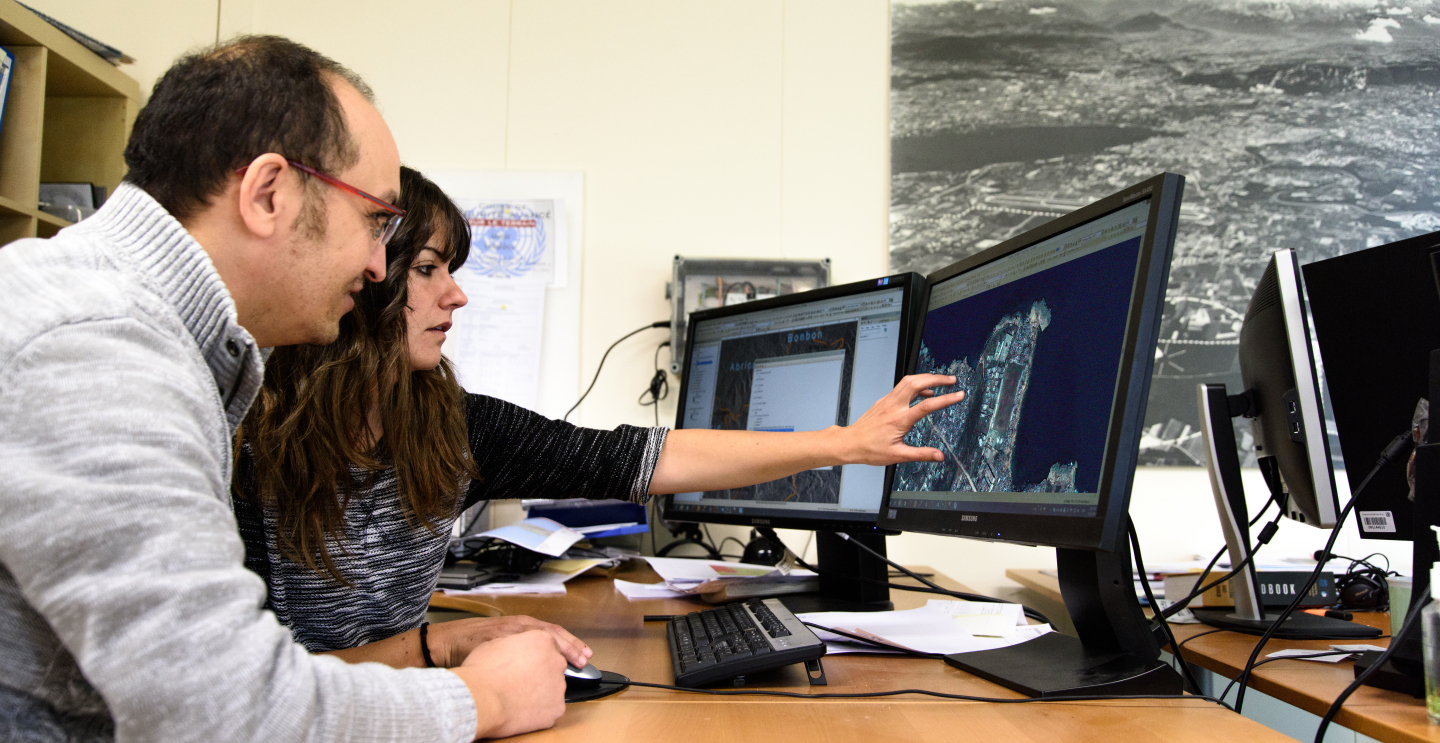CERN’s powerful IT infrastructure is useful for fields other than fundamental research. For 15 years, UNOSAT has been using the Laboratory’s computing centre infrastructure for the purposes of its humanitarian work.
The role of UNOSAT, the operational satellite applications programme of the United Nations Institute for Training and Research (UNITAR), is to produce extremely precise maps of regions of the world affected or threatened by natural disaster or conflict. To do this, UNOSAT uses very high resolution satellite images made available by space agencies and public and private satellite data providers. “The maps we produce are of very high resolution, up to 30 cm,” says Einar Bjorgo, who manages the UNOSAT programme. “They are an essential tool for teams in the field arranging aid and sustainable reconstruction.”
Since its inception, UNOSAT has been hosted by CERN’s IT department. Thanks to this collaboration, UNOSAT is able to benefit, as and when required, from the Laboratory’s IT infrastructure, which allows it to perform cutting-edge analysis of satellite images. Without the technology of the Worldwide LHC Computing Grid, the compression of the satellite images and their transformation into legible maps, for example, would not be possible. “CERN’s support is essential,” adds Einar Bjorgo. “Without its powerful IT infrastructure, we wouldn’t be able to compile the satellite data we receive to make it usable.”

Over the past 15 years, UNOSAT has already helped guide emergency teams through various locations, such as in Asia in 2004 after the tsunami that hit the coastline on the Indian Ocean, in Haiti in 2010 following the earthquake that devastated part of the country, in Pakistan in 2010 to monitor the progress of floods, in West Africa since 2014 in the fight against the Ebola epidemic, in Nepal after the series of earthquakes that hit the region in spring 2015, and, more recently, in the context of the Syrian conflict or just this past week, in Haiti, to assess the damage of Hurricane Matthew.
UNOSAT is also collaborating with UNESCO on the protection of cultural sites, particularly in conflict zones. At the service of the international humanitarian and development communities 24 hours a day, 7 days a week, UNOSAT is an essential ally in the response to humanitarian crises.
For all the latest news on UNOSAT and its landmark anniversary, visit UNITAR’s Facebook page or follow UNOSAT on Twitter (@UNOSAT).

